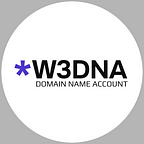The Fascinating Journey of Domain Names: From Usage of IP addresses to Domains without Extensions
In the vast realm of the internet, domain names serve as the gateway to the online world. These unique addresses, like the digital street signs of the web, have a rich history that has shaped the way we navigate and interact with websites. Let’s embark on a journey through time to explore the fascinating development of domain names.
The First Domain Name in History
In the early days of the internet, during the 1960s and 1970s, computers were interconnected through a network known as ARPANET. However, accessing specific computers required remembering lengthy strings of numbers, known as IP addresses. Imagine having to remember something like “192.168.0.1” every time you wanted to visit a website — not the most user-friendly experience, right?
To simplify this process, a system was devised to assign unique names to these IP addresses, giving birth to domain names. The first domain name, “symbolics.com, “ was registered on March 15, 1985, marking the beginning of a new era in online communication.
Emergence of ICANN and Its Influence
As the internet gained popularity in the following years, the demand for domain names soared. The responsibility of managing domain names was entrusted to the Internet Assigned Numbers Authority (IANA). It played a pivotal role in regulating the distribution of domain names, until it delegated the task to various domain name registrars.
Initially, the registration process was fairly simple and inexpensive, with only a handful of generic top-level domains (gTLDs) available, such as “.com“, “.net“, and “.org“. However, with the exponential growth of the internet, the need for more domain names and diverse extensions arose.
In 1998, the Internet Corporation for Assigned Names and Numbers (ICANN) was established as a non-profit organization to oversee the administration of domain names. ICANN introduced new gTLDs. This opened up a whole new world of possibilities for domain names. Suddenly, instead of just “.com” and a few others, people could choose from a wide range of gTLDs that reflected their interests, industries, or locations, like “yourname.photography” or “yourbusiness.restaurant”.
Since then, thousands of new gTLDs have been added to the domain name system. Some represent specific industries or professions, like “.tech” for technology or “.law” for legal services. Others represent geographic regions, like “.nyc” for New York City or “.berlin” for the capital of Germany.
However, this is already a history, since the new step of the domain names development was made by W3DNA.
Domains without Extensions (generic top-level domains — gTLDs)
In the year 2022, a groundbreaking development emerged in the realm of domain names: W3DNA revolutionized domains by liberating them from traditional extensions. But how does this innovative system actually work?
Initially, domain extensions served the purpose of classifying websites by type and managing traffic. Picture a bustling city with countless streets. To travel from point A to point B, you must traverse several streets and be familiar with their names. In the world of domain names, these extensions acted as the equivalent of road signs, guiding users to the appropriate street and ultimately reaching the desired website.
However, W3DNA’s ingenious technical solution transforms the concept of domains. Instead of navigating through a network of roads, our approach allows you to teleport directly from point A to point B. How is this possible? Well, W3DNA utilizes a unique form of NFT domains. Our novel technology decentralizes the functions previously carried out by centralized entities such as hosting providers, registries, and ICANN in Web 2.0. Instead, these tasks are now handled autonomously through smart contracts.
The ability to operate independently of traditional hosting is undoubtedly a game-changer. But how does it function in web browsers without the need for conventional hosting? To address this, W3DNA has developed a script library that users can implement in three ways:
- Install our dedicated browser.
- Add an extension to your existing browser.
- Alternatively, await our negotiations with other browsers to ensure our script library is included by default.
Now, you may wonder about the role of ICANN, the organization overseeing the entire domain namespace. Remarkably, W3DNA domains operate beyond the influence of ICANN. This is made possible by the creation of an alternative domain name registry, which places W3DNA outside the jurisdiction of ICANN’s regulations.
By adopting NFT-based domains without extensions, W3DNA introduces a new era of autonomy and flexibility in the realm of domain names. As this revolutionary technology continues to evolve, we can anticipate further advancements that redefine the way we navigate the vast landscape of the internet.
